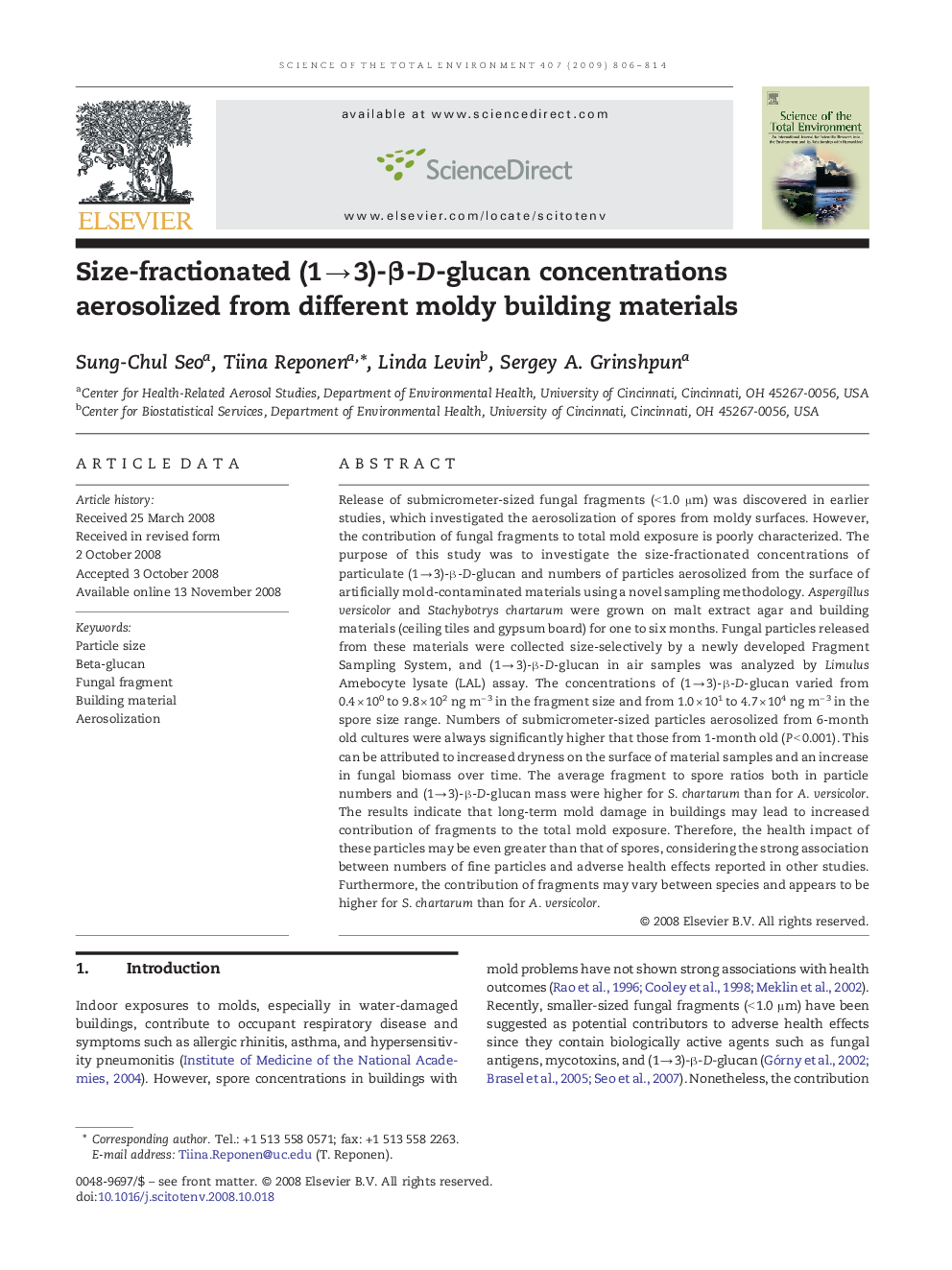| Article ID | Journal | Published Year | Pages | File Type |
|---|---|---|---|---|
| 4431893 | Science of The Total Environment | 2009 | 9 Pages |
Release of submicrometer-sized fungal fragments (< 1.0 μm) was discovered in earlier studies, which investigated the aerosolization of spores from moldy surfaces. However, the contribution of fungal fragments to total mold exposure is poorly characterized. The purpose of this study was to investigate the size-fractionated concentrations of particulate (1 → 3)-β-D-glucan and numbers of particles aerosolized from the surface of artificially mold-contaminated materials using a novel sampling methodology. Aspergillus versicolor and Stachybotrys chartarum were grown on malt extract agar and building materials (ceiling tiles and gypsum board) for one to six months. Fungal particles released from these materials were collected size-selectively by a newly developed Fragment Sampling System, and (1 → 3)-β-D-glucan in air samples was analyzed by Limulus Amebocyte lysate (LAL) assay. The concentrations of (1 → 3)-β-D-glucan varied from 0.4 × 100 to 9.8 × 102 ng m− 3 in the fragment size and from 1.0 × 101 to 4.7 × 104 ng m− 3 in the spore size range. Numbers of submicrometer-sized particles aerosolized from 6-month old cultures were always significantly higher that those from 1-month old (P < 0.001). This can be attributed to increased dryness on the surface of material samples and an increase in fungal biomass over time. The average fragment to spore ratios both in particle numbers and (1 → 3)-β-D-glucan mass were higher for S. chartarum than for A. versicolor. The results indicate that long-term mold damage in buildings may lead to increased contribution of fragments to the total mold exposure. Therefore, the health impact of these particles may be even greater than that of spores, considering the strong association between numbers of fine particles and adverse health effects reported in other studies. Furthermore, the contribution of fragments may vary between species and appears to be higher for S. chartarum than for A. versicolor.
